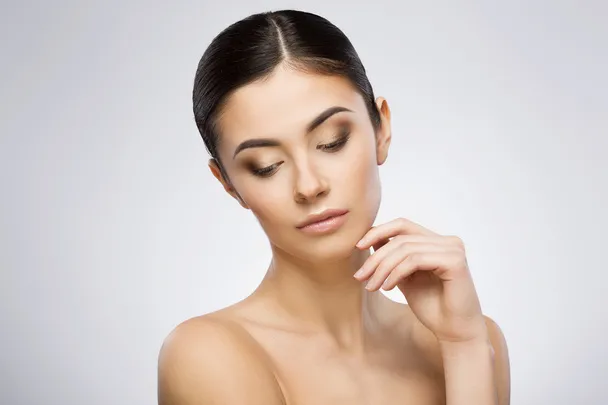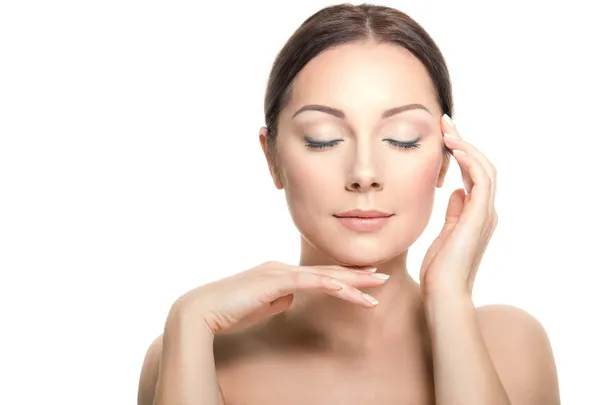A bedtime routine isn’t just about winding down after a long day; it’s an opportunity to optimize skin repair and rejuvenation while you sleep. A well-crafted bedtime routine can help support the skin’s natural regeneration processes, promote hydration, and address specific skincare concerns. In this article, we’ll explore the key components of an ideal bedtime routine for skin repair and share tips for creating a personalized routine that works for you.
Gentle Cleansing:
Gentle cleansing is the cornerstone of an effective bedtime routine, as it sets the stage for optimal skin repair and rejuvenation while you sleep. This crucial step removes accumulated dirt, oil, pollutants, and makeup from the skin’s surface, allowing it to breathe and regenerate overnight. Here’s why gentle cleansing is essential and how to do it right:
- Removing Impurities: Throughout the day, our skin is exposed to environmental pollutants, bacteria, and debris, which can accumulate on the skin’s surface and clog pores. Cleansing at night helps to wash away these impurities, preventing them from causing inflammation, breakouts, or other skin issues.
- Preserving the Skin Barrier: While cleansing is essential for removing impurities, it’s equally important to avoid stripping the skin of its natural oils. Harsh cleansers can disrupt the skin barrier, leading to dryness, irritation, and increased sensitivity. Opt for a gentle cleanser formulated with mild surfactants that effectively cleanse the skin without causing damage or dryness.
- Choosing the Right Cleanser: When selecting a cleanser for your bedtime routine, consider your skin type and any specific concerns you may have. Look for non-comedogenic formulas that won’t clog pores or exacerbate acne-prone skin. For dry or sensitive skin, choose a hydrating cleanser with moisturizing ingredients like glycerin or ceramides to maintain hydration levels.
- Proper Application Technique: To cleanse effectively, start by wetting your face with lukewarm water to help loosen dirt and makeup. Dispense a small amount of cleanser onto your fingertips and gently massage it onto your skin using circular motions. Pay particular attention to areas prone to congestion, such as the nose, chin, and forehead. Avoid scrubbing too vigorously, as this can cause irritation or redness.
- Thorough Rinsing: After cleansing, rinse your face thoroughly with lukewarm water to remove all traces of cleanser and impurities. Ensure that no residue remains on the skin, as leftover cleanser can contribute to clogged pores and dullness. Pat your skin dry with a clean towel, being careful not to rub or tug at the delicate skin.
Exfoliation (Optional):
Exfoliation is an optional but beneficial step that can enhance the effectiveness of your bedtime skincare routine. By sloughing off dead skin cells, unclogging pores, and stimulating cell turnover, exfoliation helps reveal smoother, more radiant skin underneath. However, it’s essential to approach exfoliation with caution, as overdoing it can lead to irritation, redness, and increased sensitivity.
If you choose to incorporate exfoliation into your nightly regimen, opt for a gentle chemical exfoliant rather than harsh physical scrubs, which can cause micro-tears in the skin and lead to inflammation. Look for products containing alpha hydroxy acids (AHAs) or beta hydroxy acids (BHAs), such as glycolic acid, lactic acid, or salicylic acid. These chemical exfoliants work by dissolving the bonds between dead skin cells, allowing them to be sloughed away more easily.
It’s essential to use exfoliating products sparingly and no more than two to three times a week, depending on your skin type and tolerance. Over-exfoliation can disrupt the skin’s barrier function, leading to dryness, irritation, and increased vulnerability to environmental stressors. If you experience any signs of irritation or sensitivity, scale back on exfoliation or skip it altogether until your skin has had a chance to recover.
After exfoliating, follow up with a hydrating toner to rebalance the skin’s pH levels and replenish moisture. Look for toners containing soothing ingredients like hyaluronic acid, aloe vera, or chamomile extract to calm any potential irritation and hydrate the skin. Follow with the rest of your skincare routine, including serums, moisturizers, and treatments, to maximize the benefits of exfoliation and promote healthy, glowing skin.
Hydration: Hydration is a cornerstone of any effective skincare routine, particularly during the bedtime regimen. As we sleep, our skin undergoes a reparative process, making it the perfect time to replenish moisture levels and support the skin’s natural barrier function. Incorporating hydrating products into your nighttime skincare routine can help ensure that your skin remains supple, radiant, and well-nourished.
After cleansing (and exfoliating, if applicable), the next step in your bedtime routine should be to apply a hydrating serum or essence. These lightweight, water-based formulations are packed with humectant ingredients like hyaluronic acid, glycerin, and aloe vera, which attract moisture from the environment and bind it to the skin. By delivering a surge of hydration deep into the skin’s layers, hydrating serums help plump up fine lines, smooth texture, and restore radiance to the complexion.
When choosing a hydrating serum or essence, look for products with a high concentration of humectants and soothing botanical extracts. These ingredients work synergistically to hydrate, soothe, and protect the skin, making it look and feel more supple and revitalized. Apply the serum or essence to clean, damp skin, gently pressing it into the skin with your fingertips until fully absorbed.
Following the hydrating serum or essence, it’s essential to seal in moisture with a nourishing moisturizer. Look for a moisturizer formulated with emollients and occlusives, such as ceramides, shea butter, and squalane, which help lock in moisture and create a protective barrier against moisture loss overnight. Choose a moisturizer suited to your skin type and concerns, whether you have dry, oily, combination, or sensitive skin.
Apply the moisturizer generously to your face and neck, using gentle, upward strokes to ensure even distribution. Take a moment to massage the moisturizer into your skin, focusing on any areas prone to dryness or dehydration. By sealing in the hydration from the previous steps, the moisturizer helps reinforce the skin’s moisture barrier, keeping it soft, smooth, and resilient throughout the night.
Targeted Treatments:
Targeted treatments play a pivotal role in addressing specific skincare concerns and enhancing the efficacy of your bedtime skincare routine. Whether you’re dealing with fine lines, wrinkles, dark spots, acne, or other complexion issues, incorporating targeted treatments can help you achieve your skincare goals and wake up to a more radiant complexion.
One of the most popular and effective ingredients for addressing signs of aging is retinol, a derivative of vitamin A known for its ability to stimulate collagen production, improve skin texture, and reduce the appearance of fine lines and wrinkles. Retinol works by accelerating cell turnover, promoting the shedding of dead skin cells, and stimulating the production of new, healthy skin cells. Incorporating a retinol serum or cream into your bedtime routine can help rejuvenate your skin and minimize the visible signs of aging over time.
Another powerhouse ingredient for brightening dark spots and uneven skin tone is vitamin C, a potent antioxidant that helps neutralize free radicals, reduce hyperpigmentation, and promote a more radiant complexion. Vitamin C serums are available in various formulations and concentrations, making it easy to find one that suits your skin type and needs. Apply a vitamin C serum after your hydrating serum and before your moisturizer to reap its skin-brightening benefits and achieve a more luminous, even-toned complexion.
For those struggling with acne or blemish-prone skin, incorporating targeted treatments containing ingredients like niacinamide, salicylic acid, or benzoyl peroxide can help control excess oil production, unclog pores, and reduce inflammation. Niacinamide, also known as vitamin B3, is prized for its anti-inflammatory and oil-regulating properties, making it an excellent choice for acne-prone skin. Salicylic acid, a beta hydroxy acid (BHA), penetrates deep into the pores to dissolve excess oil and debris, helping to prevent breakouts and minimize the appearance of blemishes. Benzoyl peroxide works by killing acne-causing bacteria and reducing inflammation, making it effective for treating active breakouts and preventing new ones from forming.
Peptides are another group of ingredients commonly found in targeted treatments for aging skin. Peptides are short chains of amino acids that serve as building blocks for proteins like collagen and elastin, which are essential for maintaining skin firmness and elasticity. By applying peptide-rich serums or creams to your skin before moisturizing, you can help support collagen production, improve skin texture, and diminish the appearance of wrinkles and fine lines over time.
When incorporating targeted treatments into your bedtime routine, it’s essential to follow the instructions provided by the manufacturer and start slowly to avoid potential irritation or sensitivity. Begin by using the treatment every other night or a few times a week, gradually increasing frequency as your skin adjusts. Always patch test new products before applying them to your entire face and consult with a dermatologist if you have any concerns or questions about which treatments are best suited to your skin type and concerns.
Eye Care:
Eye care is an essential component of any comprehensive skincare routine, especially during your bedtime regimen. The skin around the eyes is thinner and more delicate than the rest of the face, making it particularly susceptible to signs of aging, fatigue, and environmental damage. By incorporating targeted eye treatments into your nightly routine, you can help address common concerns such as fine lines, dark circles, puffiness, and dryness, ensuring that this delicate area remains hydrated, nourished, and rejuvenated.
When selecting an eye cream or gel, it’s essential to choose a product specifically formulated to address your unique concerns and skin type. Look for ingredients known for their hydrating, firming, and brightening properties, such as hyaluronic acid, peptides, vitamin C, caffeine, and retinol. These ingredients can help plump up fine lines, reduce dark circles, diminish puffiness, and improve overall skin texture and tone around the eyes.
To apply your chosen eye treatment, start by cleansing your face and patting the skin dry with a soft towel. Dispense a small amount of eye cream or gel onto your ring finger, as this finger exerts the least amount of pressure and is less likely to tug or pull on the delicate skin. Using gentle tapping motions, apply the product around the orbital bone, starting from the inner corner of the eye and working outward towards the temples. Avoid applying the product too close to the lash line or directly onto the eyelids to prevent irritation and product migration into the eyes.
When applying eye cream or gel, it’s essential to be gentle and avoid rubbing or stretching the delicate skin around the eyes, as this can lead to increased sensitivity and the formation of fine lines and wrinkles over time. Instead, use light tapping motions to allow the product to absorb into the skin gradually. If you’re using multiple skincare products in your bedtime routine, apply your eye treatment after your serums but before your moisturizer to ensure maximum absorption and effectiveness.
Lip Care: Lip care is an often overlooked but essential aspect of a comprehensive skincare routine, especially during the bedtime regimen. The delicate skin on our lips is susceptible to dryness, chapping, and environmental damage, particularly during the night when moisture levels can decrease. By incorporating a nourishing lip balm or treatment into your nightly routine, you can help keep your lips soft, hydrated, and healthy, ensuring a smooth and supple pout year-round.
When selecting a lip balm or treatment for bedtime use, opt for products formulated with rich, emollient ingredients that provide intense hydration and long-lasting moisture. Look for ingredients such as shea butter, coconut oil, cocoa butter, beeswax, and vitamin E, which help to replenish moisture, soothe dryness, and protect the lips from environmental aggressors. These ingredients create a protective barrier on the lips, preventing moisture loss and sealing in hydration while you sleep.
To incorporate lip care into your bedtime routine, simply apply a generous layer of lip balm or treatment to your lips before you go to bed. Using clean fingers or a lip brush, gently massage the product onto your lips, ensuring complete coverage and absorption. Pay special attention to any areas of dryness or flakiness, and reapply as needed to provide additional hydration and protection.
Keep a lip balm or treatment conveniently located on your nightstand or bedside table so that it’s easily accessible when you’re ready to wind down for the night. By making lip care a regular part of your bedtime routine, you can help prevent dryness, chapping, and discomfort, ensuring that your lips stay soft, smooth, and kissable while you sleep.
Conclusion: A bedtime routine focused on skin repair and rejuvenation is an essential part of maintaining healthy, glowing skin. By following these steps and incorporating high-quality skincare products suited to your skin type and concerns, you can create an effective nighttime ritual that promotes hydration, addresses specific skincare issues, and supports the skin’s natural renewal processes. Remember to be consistent with your routine and give your skin time to reap the benefits of your efforts. With patience and dedication, you can achieve radiant, youthful-looking skin that reflects the care and attention you give it each night.










